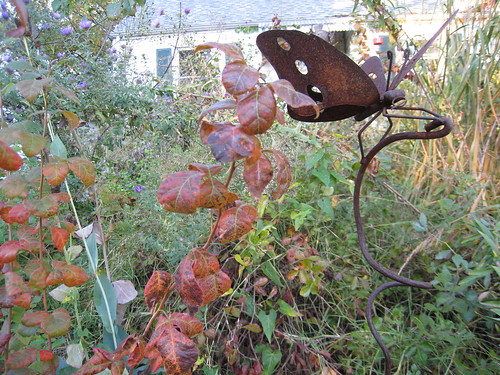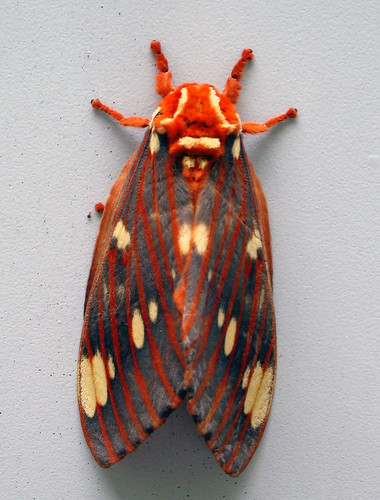Indian Cherry, Rhamnus caroliniana, is a shrub or small tree of dry, rocky glades, but it's also found near streams. It has a patchy distribution, show in the US Geological Survey map below. In Missouri, it's found south of the Missouri River, mostly in the Ozarks.
The photo above was taken just a week ago. Now some of the fruit is beginning to turn red. The "Indian" part of it's name may be related to it medicinal use by Native Americans. According to Don Kurz in Trees of Missouri, they used it to induce vomiting. It's surprising how many plants were used as emetics in traditional medicine. I really don't get that.
Indian Cherry is also known as Carolina Buckthorn, even though it has no thorns. Wikipedia says its fruit ripens in summer, Dave Tylka, in Native Landscaping for Wildlife and People, says fall. This is the first time my little tree has fruit, so I'll let you know.
Here's a mysterious fruit! My pipevine, Dutchman’s Pipe, Aristolochia macrophylla, is 5 or 6 years old and it's also bearing fruit for the first time. I haven't been able to find anything about the fruit, except that like the rest of the plant, the fruit is poisonous. Pipevine blossoms are pollinated by tiny flies that get temporarily trapped in the weird little flower, so who knows? Perhaps some of the flies that pollinated my pawpaw tree performed the same service for the pipevine. Of course, I grow pipevine for the butterflies it attracts, not the poisonous products. I've written about the vine and the fascinating butterfly in earlier posts.
 |
| Range of Indian Cherry, USGS |
The photo above was taken just a week ago. Now some of the fruit is beginning to turn red. The "Indian" part of it's name may be related to it medicinal use by Native Americans. According to Don Kurz in Trees of Missouri, they used it to induce vomiting. It's surprising how many plants were used as emetics in traditional medicine. I really don't get that.
Indian Cherry is also known as Carolina Buckthorn, even though it has no thorns. Wikipedia says its fruit ripens in summer, Dave Tylka, in Native Landscaping for Wildlife and People, says fall. This is the first time my little tree has fruit, so I'll let you know.
 |
| Pipevine fruit |
Here's a mysterious fruit! My pipevine, Dutchman’s Pipe, Aristolochia macrophylla, is 5 or 6 years old and it's also bearing fruit for the first time. I haven't been able to find anything about the fruit, except that like the rest of the plant, the fruit is poisonous. Pipevine blossoms are pollinated by tiny flies that get temporarily trapped in the weird little flower, so who knows? Perhaps some of the flies that pollinated my pawpaw tree performed the same service for the pipevine. Of course, I grow pipevine for the butterflies it attracts, not the poisonous products. I've written about the vine and the fascinating butterfly in earlier posts.
But wait! there's more! Not only have my Pawpaw (see previous post), Indian Cherry, and Dutchman's Pipevine borne fruit for the first time this year, my Golden Currant, Ribes odoratum, has joined in! There are four members of the Ribes genus native to Missouri, two gooseberries and two currants, but unlike its cousins, this shrub has no thorns. I wrote about Golden Currant's pollinators and fragrance this spring. It's fruit is ripe right now.
 |
| Golden Currant |
Productivity in my small native plant landscape is pretty gratifying—a bit like my blog, which is now 1 year old!










